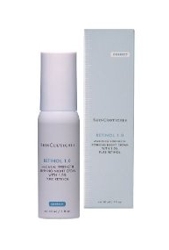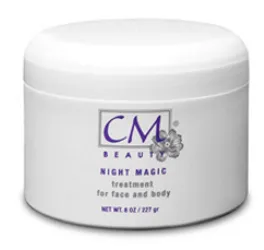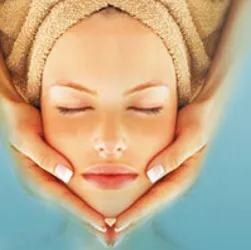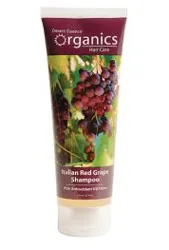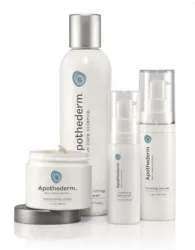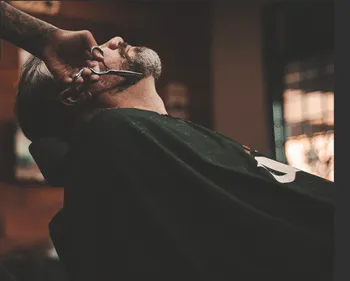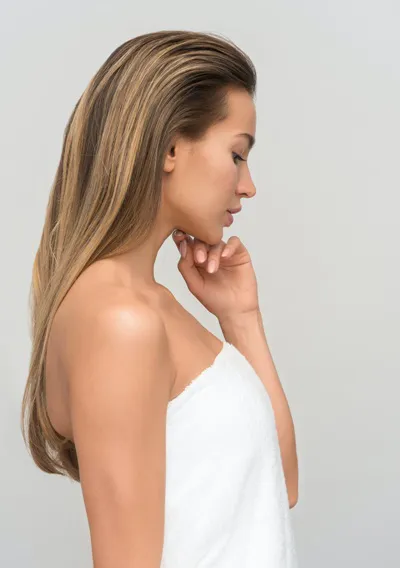
Vitamins In Skin Care To Slow Or Reverse Sun Damage
Introduction
Vitamins In Skin Care To Slow Or Reverse Sun DamageEveryone knows that getting an adequate daily dose of vitamins and minerals is important in maintaining one’s overall health, many question whether or not the vitamins touted in skin care products work in reducing the signs of sun-damaged skin. Now, a new study reviews the currently published scientific literature to determine what evidence exists to support the use of vitamins in skin care products to slow or reverse the effects of sun damage. In the report titled, “Vitamins and photoaging: Do scientific data support their use?”, published online in the Journal of the American Academy of Dermatology, dermatologist Jenny Kim, MD, PhD, FAAD, associate professor in the division of dermatology, department of medicine, at the University of California, Los Angeles (UCLA), David Geffen School of Medicine in Los Angeles, presented results of a study that may support the use of certain vitamins in oral or topical formulations. Ultraviolet (UV) Radiation And Premature Skin“It is well documented that ultraviolet (UV) radiation contributes to premature skin aging through the process of photoaging, and there is increasing evidence that the antioxidant properties of vitamins may contribute to the prevention and treatment of photo-aging,” said Dr. Kim. “In fact, numerous companies developing cosmeceuticals base their effectiveness claims on the fact that their formulations contain vitamins proven in laboratories to modify cellular processes thought to contribute to the appearance of photo-aged skin. As dermatologists, we can help our patients navigate this maze of marketing claims by sharing scientific data on the known efficacy of vitamins in skin care products.” Evidence To Support Roles Of Vitamins A, C, E And B3 In Photo-AgingBased on a comprehensive review of the available published data on the role of vitamins in skin care products, Dr. Kim and her colleagues, Jamie Zussman, MD, FAAD, and Jennifer Ahdout, MD, found there is evidence to support the potential role of vitamins A, C, E, and B3 in modifying the photo-aging process.
“While it’s evident that these vitamins can play a role in fighting sun damage, the question still remains whether these properties are effective when delivered in skin care products,” notes Dr Kim. Vitamin A: Effective in treating a variety of skin conditionsThe two most common forms of vitamin A studied for their role in protecting the skin from UV-induced damage are retinols and carotenoids. Retinol is found in foods such as liver, milk, and eggs, and is the most biologically active form of the vitamin. Carotenoids are found in many fruits and vegetables, and have strong antioxidant capabilities. Carotenoids are not shown to be beneficial in the treatment of photo-aging, but research suggests that they might play a role in photo-protection by preventing UV-induced collagen breakdown. “Although the evidence available at this time is not strong enough to offer definitive support for the use of dietary carotenoids for photo-protection, a role for carotenoids as a supplement to photo-protective agents should not be discounted yet,” said Dr. Kim. “We hope to see larger-scale clinical trials conducted to further explore the photo-protective effects of carotenoids.”
Unlike carotenoids, there is vast evidence supporting the role of topical retinoids (the class of substances formed by retinol and its natural and synthetic derivatives) in treating photoaged skin. For example, prescription retinoid formulations have the most scientific data to support their use in this area. FDA Approved Tretinoin And Tazarotene Cream
Dr. Kim noted that both tretinoin cream (0.025% and 0.05%) and tazarotene cream (0.1%) are already FDA-approved for the treatment of fine wrinkles, skin roughness, and mottled hyper pigmentation caused by aging and sun exposure. She added that studies of other retinoids have shown that a once-daily application of 0.1% isotretinoin cream for 36 weeks was effective in reducing fine wrinkles. Retinoids also are found in over-the-counter cosmeceuticals, but there is less clinical evidence supporting their effectiveness in improving photo-aged skin. “An important point to remember with retinoids is that we cannot assume that all retinoids are equal in their ability to fight photoaging,” said Dr. Kim. “In over-the-counter products, retinol appears to be the most effective retinoid based on clinical studies completed to date. However, patients should consult their dermatologist before using any topical retinoid, as side effects can occur when used with other topical products. When properly instructed by a dermatologist, most patients can tolerate topical retinoids and benefit from their effect.” Dr. Kim added that unlike topical retinoid, there is minimal evidence supporting the use of oral retinoids in the treatment of photo-aging. Vitamin C: Possible skin care product valueVitamin C, a water-soluble vitamin also known as ascorbic acid that is found in citrus fruits and dark green leafy vegetables, plays an essential role in the production of collagen and elastin. Because of its antioxidant properties, vitamin C may reverse the negative effects of UV radiation in the skin, but there are few clinically controlled studies to confirm this theory.
“An animal study examining the role of vitamin C in reversing sun damage found that when 5% ascorbate was applied two hours before UVB and UVA exposure, UVB-induced skin wrinkling was reduced,” said Dr. Kim. “Some of the human clinical trials have shown similar favorable results when applying a daily dose of L-ascorbic acid treatment, but all of these studies involved small sample sizes.” In addition, Dr. Kim pointed out that one concern of adding vitamin C to cosmeceuticals is that vitamin C is unstable when used in formulations and it is not known how much, if any, intact molecule remains when applied to the skin. “This problem has been partially overcome by chemically modifying ascorbic acid,” said Dr. Kim. “However, for the body to use the supplied ascorbic acid, it must convert it to L-ascorbic acid and many of the stabilized, commercially available forms have not been examined to determine whether this conversion is possible. For that reason, the average consumer will not be able to determine if a cosmeceutical containing vitamin C will be effective.” Vitamin E: A primary antioxidantVitamin E, or tocopherol, is a fat-soluble vitamin and its synthetic form is found in many over-the-counter products. Working as an antioxidant, vitamin E protects cell membranes and is thought to play an important role in skin aging because of its antioxidant properties. While topical vitamin E is available in a variety of products, there is no data which support claims that it improves skin wrinkling, discoloration and texture. “Topical vitamin E has been studied in humans, as in mice, more as a protectant to be used before sun exposure than as an agent to be included in cosmeceuticals to reduce the signs of skin aging,” said Dr. Kim. “Through research we have learned that UV exposure significantly decreases levels of cutaneous vitamin E, and vitamin C should be included in any formulation containing vitamin E because of the important role it plays in maintaining active vitamin E levels.”
Research also has explored combining vitamins E and C as an oral supplement to provide sun protection. Multiple studies suggest that this combination therapy is beneficial for photo-protection. However, Dr. Kim noted that overzealous oral vitamin E supplements may be harmful and two new studies also suggest that a high intake of vitamin E may be associated with an increased risk of basal cell carcinoma. Vitamin B3: A possible treatment for photoagingThe B vitamins consist of eight different water-soluble vitamins that are found in a variety of foods. Vitamin B3 has been shown to reduce blood cholesterol and atherosclerosis (a condition in which fatty materials collect along artery walls), but now new insights are examining its role as an effective treatment for several skin conditions – from acne to photoaging. Specifically, Dr. Kim noted that vitamin B3 has been found to increase collagen production in in vitro studies and to reduce skin hyper-pigmentation (dark spots) in clinical studies. “There has been one clinical trial conducted in Caucasian women in which 50 women applied 5% niacinamide (topical vitamin B3) to one side of their faces twice per day for 12 weeks, and these women experienced significant reductions in the appearance of hyper-pigmented spots, redness, wrinkles, and yellowing, as well as improved skin elasticity,” said Dr. Kim.
“While initial studies show promise that topical vitamin B3 may prevent UV-induced skin aging, larger clinical trials are needed to confirm its role as a definitive treatment of photoaging.” SummaryBottom Line? Maintain healthy lifestyle, healthy diet, practice sun protection Dr. Kim added that it is important for everyone to get an adequate daily supply of vitamins to maintain a healthy lifestyle, and any insufficiencies may negatively impact the skin’s overall appearance. “Research has shown a potential role for various vitamins in reducing the damaging effects of sun exposure on the skin. Whether topical or oral formulations containing these vitamins have a protective effect is uncertain. Given the number, type and variability of preparations available, consumers should understand from our study that skin care products with vitamins may not provide clinically meaningful improvement,” said Dr. Kim. “What is known is that proper sun protection is key to the prevention of photoaging and should be top of mind at all times.” For more information on improving the appearance of your skin, go to the AgingSkinNet section of www.SkinCarePhysicians.com, a Web site developed by dermatologists that provides patients with up-to-date information on the treatment and management of disorders of the skin, hair, and nails. More About American Academy Of Dermatology
Headquartered in Schaumburg, Ill., the American Academy of Dermatology (Academy), founded in 1938, is the largest, most influential, and most representative of all dermatologic associations. With a membership of more than 16,000 physicians worldwide, the Academy is committed to advancing the diagnosis and medical, surgical and cosmetic treatment of the skin, hair and nails; advocating high standards in clinical practice, education, and research in dermatology; and supporting and enhancing patient care for a lifetime of healthier skin, hair and nails. For more information, contact the Academy at 1 (888) 462-DERM (3376) or visit www.aad.org. Social Media Network InformationPlease follow me on Twitter at: http://Twitter.com/HairBoutique. I look forward to meeting new Visit us at Hairboutique.com located at: http://www.HairBoutique.com, on Facebook, MySpace and YouTube. Thank you for visiting us at The HairBoutique Blog and for leaving your comments. They are very much appreciated. We apologize in advance but must remove any direct advertisements or solicitations. - Revised Date: 09/16/11 | |||||||||||||||||||||
| If you want to talk more about this or other hair care articles on HairBoutique.com or anywhere else, please post a message on HairBoutique.com's Hair Talk Forums.
|
Social Media Network Information
Please follow us on Twitter at: https://Twitter.com/HairBoutique. I look forward to meeting new people from all walks of Twitter and learning from their Tweets.







